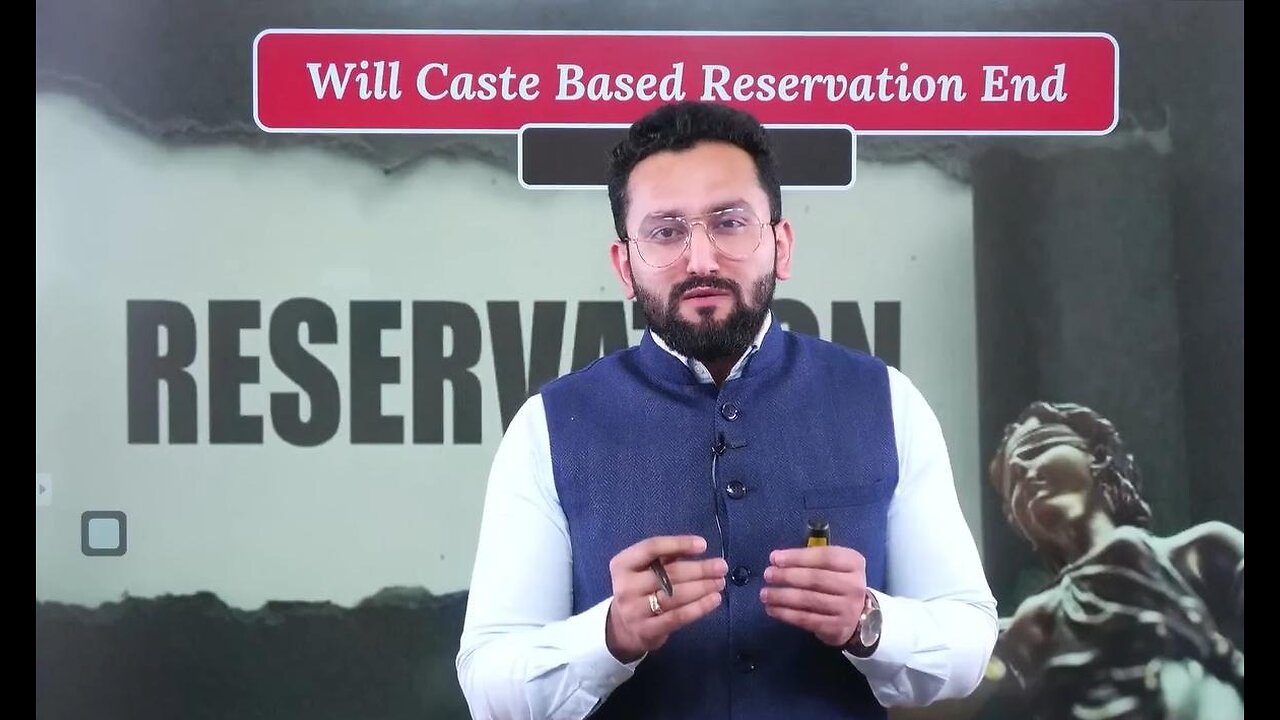Premium Only Content

Critical Analysis of India’s Reservation System _ Pros & Cons, History
The reservation system in India is a form of affirmative action that provides opportunities for education and employment to certain sections of society that have been historically disadvantaged. The system is based on the concept of social justice and aims to promote equality and fairness in society.
The reservation system in India is governed by the Constitution of India, which provides for reservations in education and employment for certain categories of people, including:
Scheduled Castes (SCs): These are communities that have been traditionally marginalized and oppressed, and are considered to be at the bottom of the social hierarchy.
Scheduled Tribes (STs): These are indigenous communities that have been historically isolated and marginalized.
Other Backward Classes (OBCs): These are communities that are considered to be socially and economically backward, but are not as marginalized as SCs and STs.
Economically Weaker Sections (EWS): This category was introduced in 2019 and provides reservations for economically weaker sections of society, regardless of their caste or social status.
The reservation system in India provides for a certain percentage of seats in educational institutions and government jobs to be reserved for these categories. The percentage of reservation varies depending on the category and the state, but it is generally as follows:
SCs: 15% of seats in educational institutions and government jobs
STs: 7.5% of seats in educational institutions and government jobs
OBCs: 27% of seats in educational institutions and government jobs
EWS: 10% of seats in educational institutions and government jobs
-
 LIVE
LIVE
VINCE
1 hour agoTop Democrat Says the Quiet Part Out Loud | Episode 153 - 10/23/25
32,410 watching -
 LIVE
LIVE
Benny Johnson
45 minutes agoIllegal Alien Trucker Released By Biden KILLS Three in DEADLY DUI Crash, California License SCANDAL
3,345 watching -
 1:33:59
1:33:59
Graham Allen
2 hours agoDems PANIC as Shutdown Backfires! Fake News MELTS Down Over New Pentagon Press Corps!
86K36 -
 LIVE
LIVE
Major League Fishing
7 days agoLIVE! - Fishing Clash Team Series: Patriot Cup - Day 2
163 watching -
 LIVE
LIVE
Badlands Media
7 hours agoBadlands Daily: October 23, 2025
2,867 watching -
 LIVE
LIVE
Wendy Bell Radio
5 hours agoWho Is Today's Democrat?
7,474 watching -
 LIVE
LIVE
Side Scrollers Podcast
3 days ago🔴FIRST EVER RUMBLE SUB-A-THON🔴DAY 3🔴WAKE YOUR ASS UP!
1,152 watching -
 LIVE
LIVE
The Mike Schwartz Show
12 hours agoTHE MIKE SCHWARTZ SHOW with DR. MICHAEL J SCHWARTZ 10-23-2025
3,381 watching -
 1:07:28
1:07:28
Chad Prather
16 hours agoHow To Fight Back When The World Is Pulling You Apart!
38.7K17 -
 LIVE
LIVE
LFA TV
11 hours agoLIVE & BREAKING NEWS! | THURSDAY 10/23/25
3,267 watching